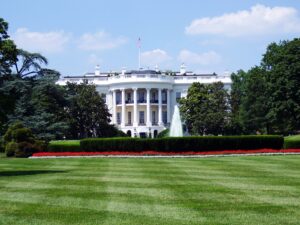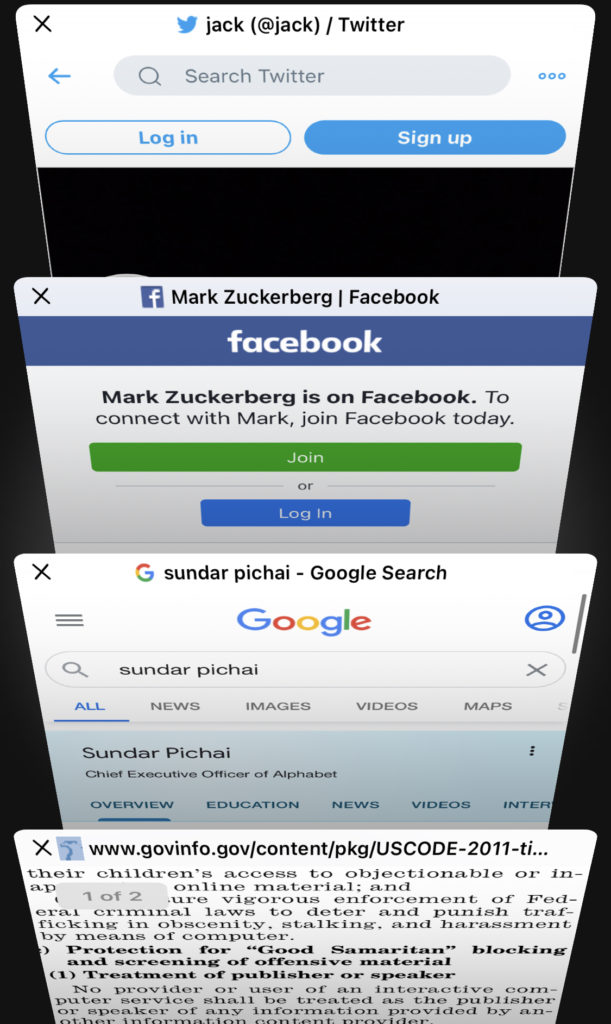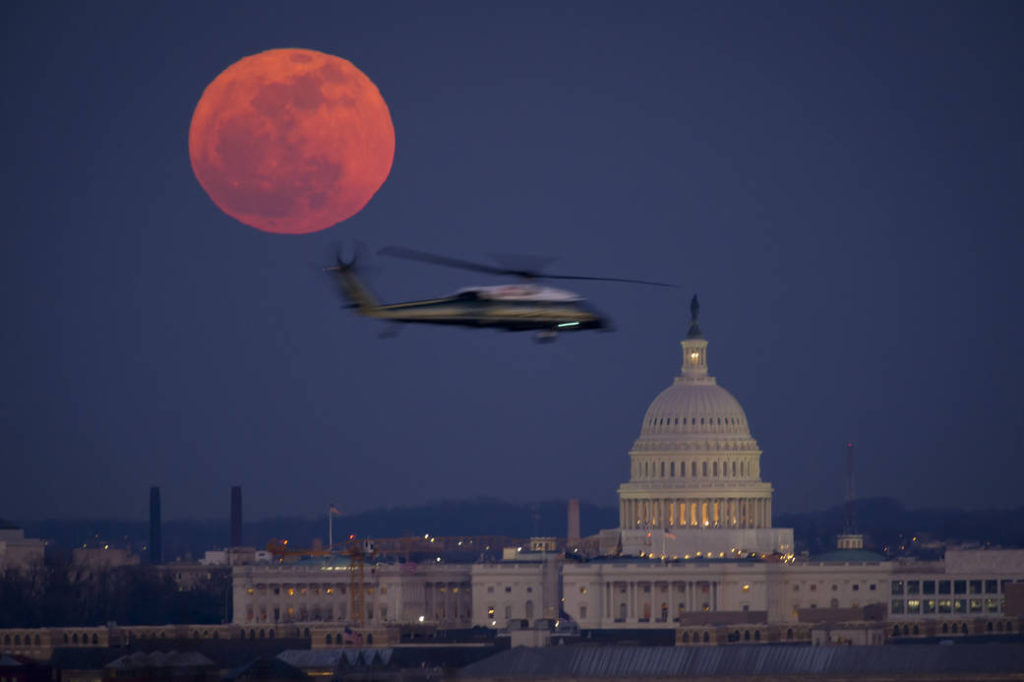Taylor Jones
Overhauling United States environmental and labor policies has been a priority of the Biden Administration since the 2020 presidential election.[1] In fact, the Biden-Harris campaign’s website still displays Biden’s promise to “sign a series of new executive orders with unprecedented reach that go well beyond the Obama-Biden Administration platform”[2] concerning environmental issues. Likewise, during the campaign, Biden promised to be “the most pro-union president you’ve ever seen[.]”[3] Biden started strong toward achieving these objectives on his first day in office.[4] In the words of giddy CNN reporters on Inauguration Day, “[w]ith the stroke of a pen,” “Biden is signing a flurry of executive orders, memorandums and directives to agencies,” “moving faster and more aggressively to dismantle his predecessor’s legacy than any other modern president.”[5] In one such executive order, Biden committed the US to rejoin the Paris Agreement.[6] In another, Biden halted construction of the Keystone XL pipeline by revoking its permit.[7] Further, in a move the CNN reporters failed to discuss, Biden unceremoniously fired Peter Robb, Trump-appointed General Counsel of the National Labor Relations Board, ten months prior to the expiration of his term.[8]
After seemingly early success on environmental and labor issues, success on the legislative front stalled. First, the Green New Deal legislation,[9] with its discussions of cow flatulence[10] and the morality of having children in a world facing climate change,[11] was left to compost in the Senate, with three Democrats voting against the resolution.[12] Then, just as a majority of the American workforce has failed to support unionization,[13] a majority of Senators failed to support both the Protecting the Right to Organize Act of 2021 (“PRO Act”)[14] and the Build Back Better Act.[15]
With the prospect of environmental and labor reform being achieved by Congress diminished, purportedly independent regulatory agencies have stepped in to fill the legislative void.[16] Both the National Labor Relations Board (“NLRB”), responsible for administering the National Labor Relations Act (the “NLRA”),[17] and the Securities and Exchange Commission (the “SEC”), established to protect investors, maintain efficient markets, and facilitate capital formation,[18] are defined by statute as independent regulatory agencies.[19] Distinguished from executive agencies, independent regulatory agencies are intended to operate with greater independence from the executive branch.[20] In theory, the greater independence is intended to reduce politically motivated interference with the agencies and allow for congressionally-delegated rulemaking independent of executive branch control.[21]
Despite its intended independence from partisan politics, the Biden NLRB has been criticized as “beholden to the interests of organized labor,”[22] and policy oscillation has come to be seen as the natural result of changes in presidential administrations.[23] Akin to Biden’s aggressiveness on his first day in office, the NLRB has openly attacked Trump-era precedents and attempted to institute changes that Congress was unable to pass legislatively in the PRO Act and Build Back Better Act.[24]
For instance, Jennifer Abruzzo, the Biden-appointed current General Counsel of the NLRB, issued a Mandatory Submissions to Advice memorandum in August of 2020 signaling cases she will bring before the pro-union NLRB in order to establish new precedent.[25] Additionally, General Counsel Abruzzo made headlines in September 2021 when she issued a memorandum to NLRB field offices that she will consider student-athletes to be statutory employees entitled to the protections of the NLRA.[26] Likewise, in April 2022, General Counsel Abruzzo issued a similar memorandum declaring she will consider captive audience meetings a violation of the NLRA.[27] However, while the upheaval at the NLRB signaled the willingness of independent regulatory agencies to come to the rescue of proposed Biden labor policies, the impact of the changes at the NLRB will arguably be negligible. With a national unionization rate of approximately ten percent,[28] aside from attention-grabbing headlines concerning college athletes during football season, most of the policy shifts at the NLRB have likely flown under the radar of most Americans and not substantially impacted employers.
Perhaps more importantly, the SEC has recently taken a decisive stand to advance the goals of the failed Green New Deal legislation.[29] Under the SEC’s new proposed rule concerning climate-related disclosures, public companies will be required to include a laundry list of climate-related disclosures in SEC filings, including climate-related goals, board and management oversight of climate risks, and Scope 1 and 2 emissions for all publicly-traded companies, with full Scope 3 emissions data being required of some companies.[30] As stated in a letter to SEC Chair Gary Gensler signed by nineteen Republican senators in opposition to the SEC’s recent proposed rule on emissions disclosures, “[a]fter failed attempts to enact radical climate policy via legislation, this rule is yet another example of the Biden Administration’s efforts to have unelected bureaucrats implement its preferred agenda through regulation.”[31]
The public comment period for the proposed rule closes on May 20, 2022.[32] If the rule adopted by the SEC is substantially similar to the proposed rule, litigation may ensue.[33] Challenges will likely center around the SEC exceeding its statutory authority and goal of protecting investors,[34] as well as compelling corporate speech in violation of the First Amendment.[35] In a scathing statement by SEC Commissioner Hester M. Peirce, entitled “We are Not the Securities and Environment Commission – At Least Not Yet,” Commissioner Peirce suggests additional legal hurdles for the rule, including non-delegation issues and vastly inaccurate compliance cost estimates.[36] Should the rule be struck by the courts on any of the grounds above, or alternative legal theories, we will then be left to see what other avenues the Biden Administration and its allies will seek to exploit to advance its environmental policy agenda as the 2024 presidential election draws closer.
[1] See Emma Newburger, Joe Biden Calls Climate Change the ‘Number One Issue Facing Humanity,’ CNBC (Oct. 24, 2020, 1:45 PM), https://www.cnbc.com/2020/10/24/joe-biden-climate-change-is-number-one-issue-facing-humanity.html; see Noah Bierman & David Lauter, Biden May be the Most Pro-Union President Since Truman. But Can He Stop Labor’s Decline?, Los Angeles Times (June 2, 2021), https://www.latimes.com/politics/story/2021-06-02/biden-pro-union-can-he-reverse-labors-long-decline.
[2] The Biden Plan for a Clean Energy Revolution and Environmental Justice, Biden-Harris Democrats, https://joebiden.com/climate-plan/ (last visited Apr. 22, 2022).
[3] Abigail Johnson Hess, Biden Promises to be ‘the Most Pro-Union President’ – and Union Members in Congress are Optimistic, CNBC Work, https://www.cnbc.com/2020/12/01/biden-promises-to-be-the-most-pro-union-president-and-rep.html (Dec. 2, 2020, 10:05 PM).
[4] See Eric Bradner, Betsy Klein & Christopher Hickey, Biden Targets Trump’s Legacy with First-day Executive Actions, CNN Politics (Jan. 20, 2021, 8:48 PM), https://www.cnn.com/2021/01/20/politics/executive-actions-biden/index.html
[5] Id.
[6] Id.
[7] Rob Gillies, Keystone XL Pipeline Halted as Biden Revokes Permit, AP News, https://apnews.com/article/joe-biden-alberta-2fbcce48372f5c29c3ae6f6f93907a6d (Jan. 20, 2021).
[8] See Bradner, supra note 4; Ian Kullgren & Josh Eidelson, Biden Fires NLRB General Counsel After He Refuses to Resign, Bloomberg Law, https://news.bloomberglaw.com/daily-labor-report/biden-moves-to-oust-top-labor-board-attorney-robb (Jan. 20, 2021, 9:42 PM).
[9] Recognizing the Duty of the Federal Government to Create a Green New Deal, H.R. 109, 116th Cong. (2019-2020).
[10] Rep. Cortez Repeats Claim that Cow Flatulence Threatens Mankind, Metro Voice News (Apr. 2, 2019), https://metrovoicenews.com/rep-cortez-repeats-claim-that-cow-flatulence-threatens-mankind/.
[11] Isabel Vincent & Melissa Klein, Gas-guzzling Car Rides Expose AOC’s Hypocrisy Amid Green New Deal Pledge, New York Post (Mar. 2, 2019, 7:32 PM), https://nypost.com/2019/03/02/gas-guzzling-car-rides-expose-aocs-hypocrisy-amid-green-new-deal-pledge/ .
[12] Jacob Pramuk, Green New Deal Backed by Alexandria Ocasio-Cortez Fizzles Out in the Senate as Dems Accuse GOP of Putting on a ‘Stunt’ Vote, CNBC, https://www.cnbc.com/2019/03/26/aocs-green-new-deal-dies-in-mcconnell-led-senate-vote.html (Mar. 26, 2019, 4:51 PM).
[13] News Release, Bureau of Labor Statistics, Union Members – 2021 (Jan. 20, 2022), https://www.bls.gov/news.release/pdf/union2.pdf (last visited Feb. 26, 2022).
[14] Diana Furchtgott-Roth, Democrats Can’t Pass the PRO Act, so It’s Buried in the Reconciliation Bill, The Hill (Oct. 09, 2021. 11:01 AM), https://thehill.com/opinion/white-house/575992-dems-cant-pass-the-pro-act-so-its-buried-in-the-reconciliation-bill/; see Protecting the Right to Organize Act of 2021, H.R. 842, 117th Cong. (2021).
[15] Burgess Everett, Dems Face Sobering Possibility: Build Back … Never, Politico (Feb. 2, 2022, 9:00 AM), https://www.politico.com/news/2022/02/10/democrats-social-spending-dreams-stuck-in-winter-purgatory-00007557; see Build Back Better Act of 2021, H.R. 5376, 117th Cong. (2021).
[16] Brody Mullins & Ryan Tracy, Biden’s Regulatory Drive Sparks Pushback From Business Lobbyists, Wall Street Journal (Feb. 7, 2022, 5:30 AM), https://www.wsj.com/articles/bidens-regulatory-drive-sparks-pushback-from-business-lobbyists-11644229802.
[17] National Labor Relations Act, 29 U.S.C. §§ 151–69 (1947).
[18] What We Do, United States Securities and Exchange Commission, https://www.sec.gov/about/what-we-do (Nov. 22, 2021).
[19] 44 U.S. Code § 3502 (2019).
[20] Robert Longley, Independent Executive Agencies of the US Government, ThoughtCo., https://www.thoughtco.com/independent-executive-agencies-of-us-government-4119935 (Aug. 2, 2021).
[21] See generally Congressional Research Service, Congress’s Authority to Influence and Control Executive Branch Agencies (2021), https://sgp.fas.org/crs/misc/R45442.pdf.
[22] Tomiwa Aina, Full House: A Fully Constituted Biden NLRB is Here, Fisher Phillips (Aug. 10, 2021), https://www.fisherphillips.com/news-insights/fully-constituted-biden-nlrb-is-here.html.
[23] Joan Flynn, A Quiet Revolution at the Labor Board: The Transformation of the NLRB 1935-2000, 61 Ohio St. L. J. 1361, 1413 (2000).
[24] See NLRB General Counsel Jennifer Abruzzo Issues Memorandum Presenting Issue Priorities, National Labor Relations Board (Aug. 12, 2021), https://www.nlrb.gov/news-outreach/news-story/general-counsel-jennifer-abruzzo-releases-memorandum-presenting-issue.
[25] Steven M. Swirsky & Donald S. Krueger, NLRB General Jennifer A. Abruzzo Issues “Mandatory Submissions to Advice” and “Utilization of Section 10(j) Proceedings” Memos, Outlining Her Priorities and Enforcement Agenda, The National Law Review (Aug. 23, 2021), https://www.natlawreview.com/article/nlrb-general-counsel-jennifer-abruzzo-issues-mandatory-submissions-to-advice-and.
[26] NLRB General Counsel Jennifer Abruzzo Issues Memo on Employee Status of Players at Academic Institutions, National Labor Relations Board Office of Public Affairs (Sept. 29, 2021), https://www.nlrb.gov/news-outreach/news-story/nlrb-general-counsel-jennifer-abruzzo-issues-memo-on-employee-status-of.
[27] NLRB General Counsel Jennifer Abruzzo Issues Memo on Captive Audience and Other Mandatory Meetings, National Labor Relations Board Office of Public Affairs (Apr. 7, 2022), https://www.nlrb.gov/news-outreach/news-story/nlrb-general-counsel-jennifer-abruzzo-issues-memo-on-captive-audience-and.
[28] Bureau of Labor Statistics, News Release: Union Members – 2021 (Jan. 20, 2022, 10:00 AM), https://www.bls.gov/news.release/pdf/union2.pdf (last visited Apr. 22, 2022).
[29] See The Enhancement and Standardization of Climate-Related Disclosures for Investors, 87 Fed. Reg. 21334 (Apr. 11, 2022) (to be codified at 17 C.F.R. pts. 210, 229, 232, 239, 249).
[30] Id.
[31] Letter from Kevin Cramer, Senator of North Dakota, and 18 United States Senators, to Gary Gensler, Chair, SEC (Apr. 5, 2022), https://senatorkevincramer.app.box.com/s/tpo6hagvk3ynh0752g38aiwnnast7mjt (last visited Apr. 22, 2022).
[32] The Enhancement and Standardization, supra note 29.
[33] Letter from Patrick Morrisey, West Virginia Attorney General, and 15 state Attorneys General, to Gary Gensler, Chair, SEC (June 14, 2021), https://www.sec.gov/comments/climate-disclosure/cll12-8915606-244835.pdf (last visited Apr. 22, 2022).
[34] Id.
[35] Id.
[36] Hester M. Peirce, Commissioner of the SEC, We are Not the Securities and Environment Commission – At Least Not Yet, Statement U.S. Securities and Exchange Commission (Mar. 21, 2022), https://www.sec.gov/news/statement/peirce-climate-disclosure-20220321.
Photo by Aaron Kittredge via Pexels




